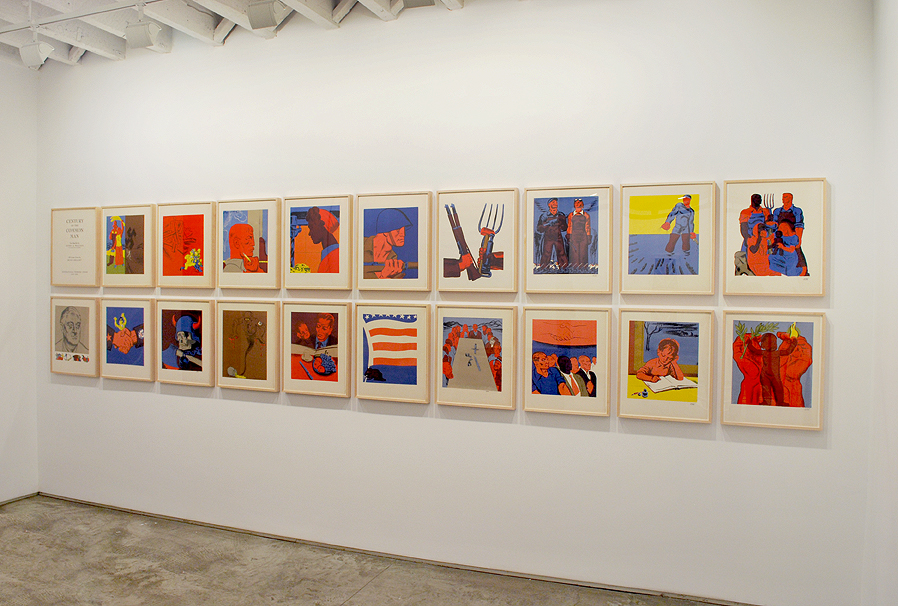 Portfolio of 19 Silkscreens
Portfolio of 19 SilkscreensEdition of 54
Hugo Gellert’s portfolio of 19 handmade silkscreens, illustrate a fiery 1943 speech delivered by Democratic Vice President Henry Wallace, in
which he called for an egalitarian future, free of Fascism—a century of the common man. In his illustrations of the speech, Gellert depicts—with a pop-like graphic sensibility well beyond its time—men, women and children of various races and cultures learning to “think and work together,” juxtaposed with anti-Nazi and anti-fascist imagery. A committed socialist and political activist, Gellert frequently made work that reflected his commitment to the working class, racial integration, and international labor coordination
In the 1940s, silkscreen as a fine art medium was relatively new, and as such Gellert was toying with technical boundaries as he made this portfolio, which stands out to this day as a unique body of work in the history of American printmaking for its style, subject matter, and ambition. As a contribution to the war effort, the screenprints were reproduced in a brochure published by the International Workers Order, with translations of Wallace's texts in fifteen different languages.
In the 1940s, silkscreen as a fine art medium was relatively new, and as such Gellert was toying with technical boundaries as he made this portfolio, which stands out to this day as a unique body of work in the history of American printmaking for its style, subject matter, and ambition. As a contribution to the war effort, the screenprints were reproduced in a brochure published by the International Workers Order, with translations of Wallace's texts in fifteen different languages.